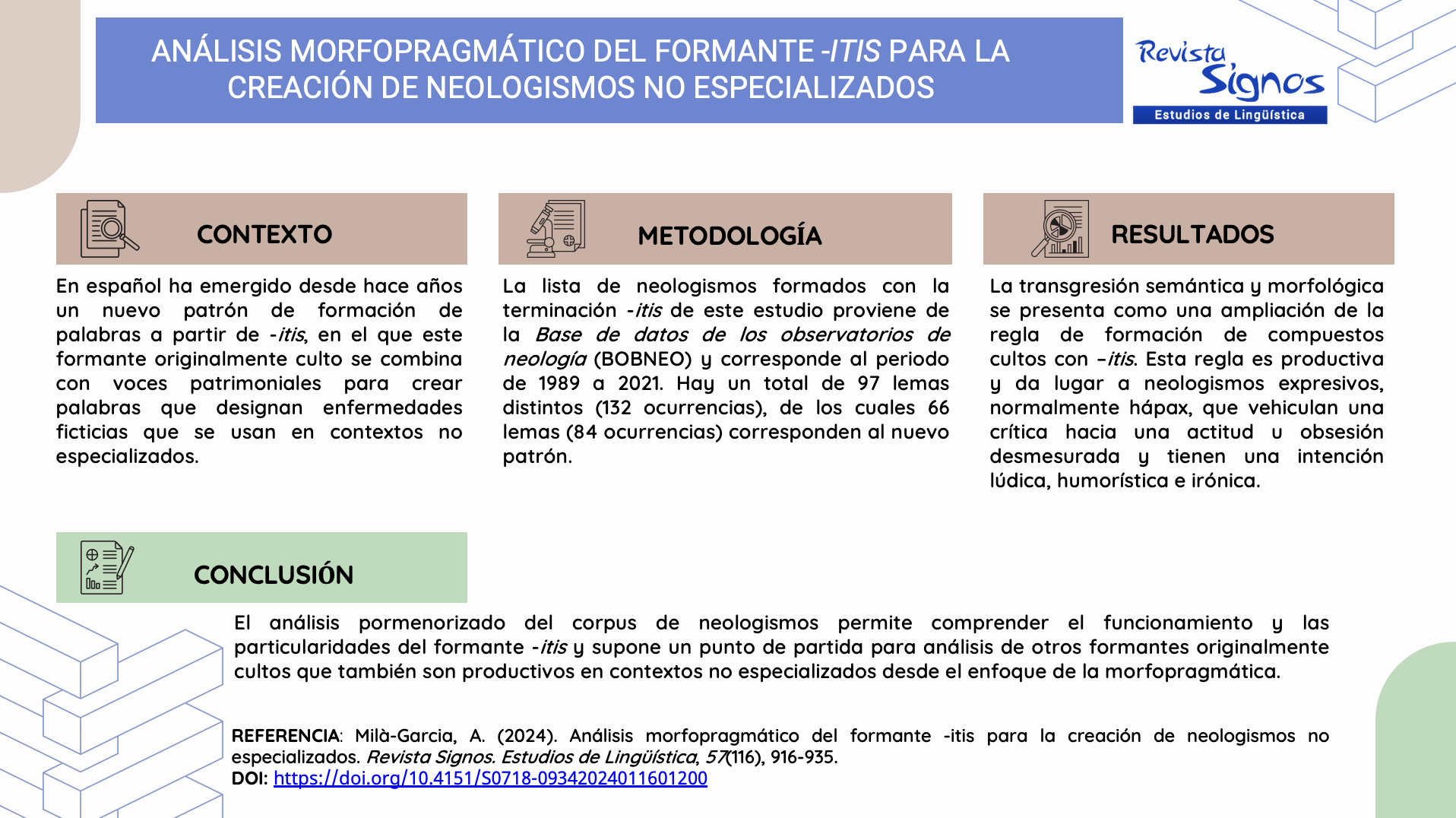Morphopragmatic Analysis of the Suffix -itis for the Creation of Non-Specialised Neologisms
DOI:
https://doi.org/10.4151/S0718-09342024011601200Keywords:
neology, morphopragmatics, neoclassical compounding, creativity, humourAbstract
In Spanish, like in other languages, a new word formation pattern with the suffix -itis has emerged, which is characterised by combining common words with this (originally) neoclassical compound to create words that refer to fictional illnesses that are used in non-specialised contexts. Within neology studies, neoclassical compounding is one of the Word formation processes that has received more attention in the last decades, given the high productivity that has been observed among language users, who imitate this process to satisfy specific, and mostly punctual, expressive needs. Starting from a literature review on non-specialised -itis, this article analyses of the neologisms found on the database of the Observatori de Neologia. The analysis focuses on the formation of these neologisms, the meaning of the suffix -itis and the expressive value of the words from the point of view of morphopragmatics, in order to determine, with more precision, the humoristic and ironic nuances that previous literature has assigned to them. This detailed analysis sheds some light on the distinctive features of this suffix, and becomes a starting point for the analysis of other neoclassical combining forms that have become productive in non-specialized contexts.

Published
How to Cite
Issue
Section
License
Copyright (c) 2024 Revista Signos. Estudios de Lingüística

This work is licensed under a Creative Commons Attribution 4.0 International License.
Copyright agreement:
Authors who have a manuscript accepted for publication in this journal agree to the following terms:
Authors will retain their copyright and grant the journal the right of first publication of their work by means of this copyright agreement document, which is subject to the Creative Commons Acknowledgment License that allows third parties to share the work provided that its author and first publication in this journal are indicated.
Authors may adopt other non-exclusive license agreements for distribution of the published version of the work (e.g., depositing it in an institutional repository or publishing it in a monographic volume) as long as the initial publication in this journal is indicated.
Authors are allowed and encouraged to disseminate their work via the internet (e.g., in institutional publications or on their website) before and during the submission process, which can lead to interesting exchanges and increase citations of the published work (read more here).


